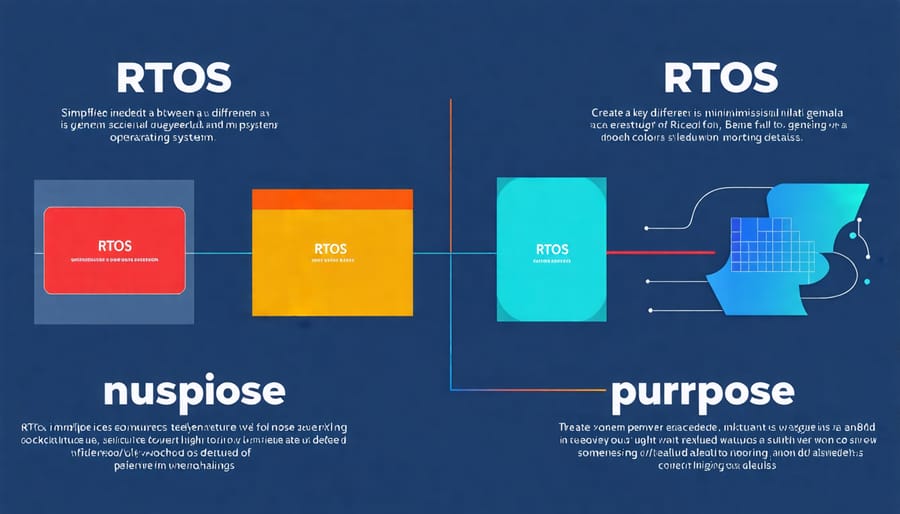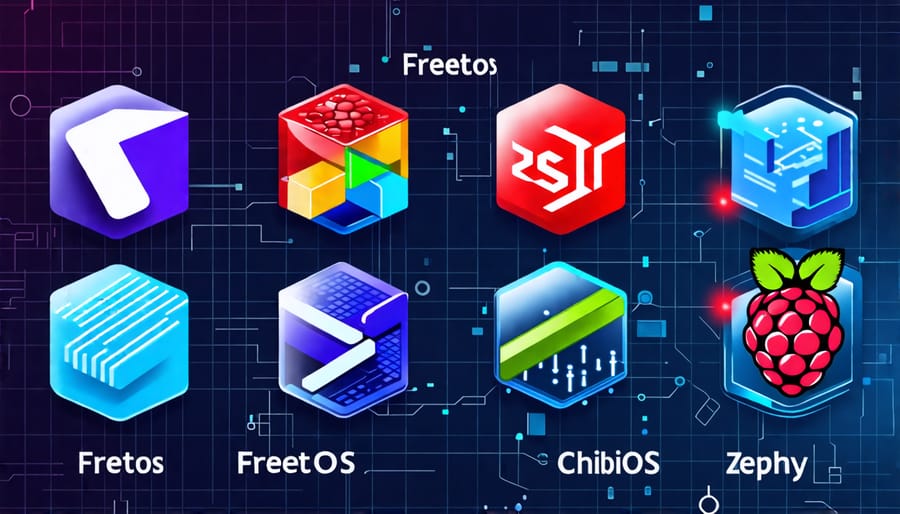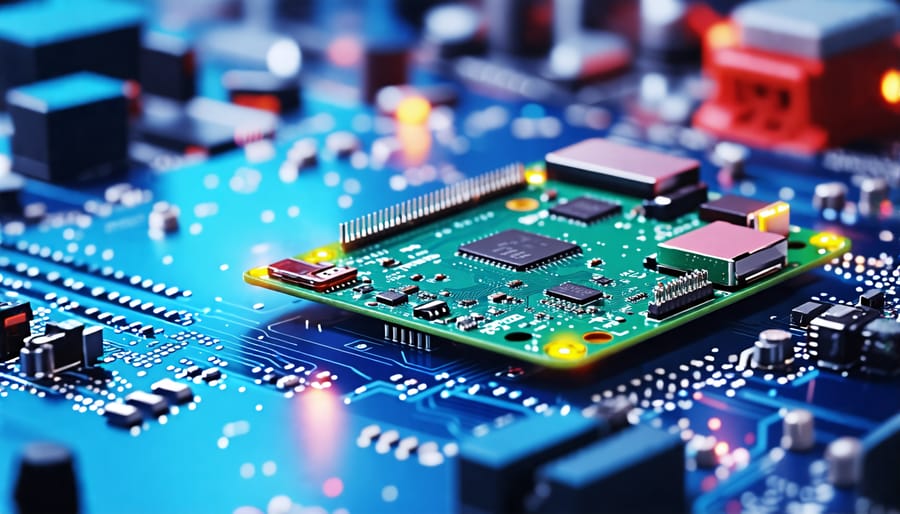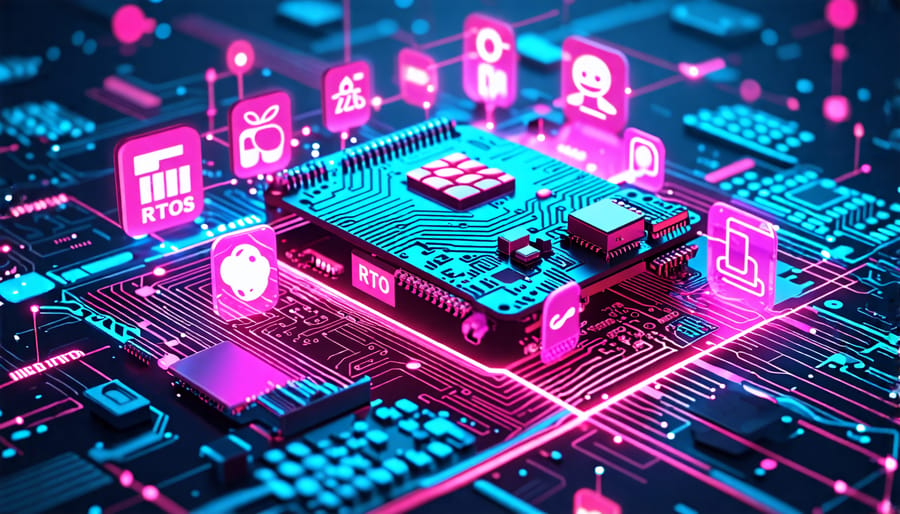Unleash the power of real-time performance on your Raspberry Pi by harnessing the capabilities of a Real-Time Operating System (RTOS). An RTOS optimizes your Pi for time-critical applications, ensuring deterministic behavior and minimal latency. Explore popular RTOS options like FreeRTOS, Zephyr, and Xenomai, each offering unique features and community support. Dive into hands-on tutorials to set up your chosen RTOS, configure tasks, and master real-time scheduling techniques. Discover real-world applications, from robotics and industrial control to multimedia streaming, where RTOS empowers your Raspberry Pi to deliver reliable, high-performance solutions. Embark on a journey to push the boundaries of what your Raspberry Pi can achieve with the precision and efficiency of a real-time operating system.
Understanding Real-Time Operating Systems

Deterministic Scheduling
Deterministic scheduling is a key feature of real-time operating systems (RTOS) that ensures tasks are executed in a predictable and timely manner. In an RTOS, tasks are assigned priorities based on their importance and time-sensitivity. The scheduler guarantees that the highest-priority task ready to run is always given access to the CPU, preempting lower-priority tasks if necessary. This deterministic behavior is crucial for real-time applications where missing deadlines can lead to system failures or even safety hazards.
RTOS schedulers use algorithms like Rate Monotonic Scheduling (RMS) or Earliest Deadline First (EDF) to determine the order of task execution. These algorithms take into account factors such as task priority, periodicity, and deadlines to ensure optimal resource allocation and minimize latency. By providing deterministic scheduling, an RTOS enables developers to build reliable and responsive systems that can handle time-critical tasks with precision and consistency.
Low Latency and High Responsiveness
One of the key advantages of using a Real-Time Operating System (RTOS) on a Raspberry Pi is its ability to minimize latency and provide high responsiveness. RTOS is designed to prioritize and execute critical tasks within strict time constraints, ensuring that the system responds quickly to external events and interrupts. By employing a preemptive multitasking approach, RTOS allows high-priority tasks to interrupt and take precedence over lower-priority tasks, reducing delays and improving overall system performance. This low latency and high responsiveness make RTOS an ideal choice for applications that require real-time control, such as robotics, industrial automation, and embedded systems. With RTOS, your Raspberry Pi projects can react swiftly to sensor inputs, control actuators with precision, and deliver a seamless user experience, even under demanding real-time conditions.

Popular RTOS Options for Raspberry Pi
FreeRTOS
FreeRTOS is a popular, open-source real-time operating system that is well-suited for Raspberry Pi projects. It offers a lightweight and efficient solution for developing applications that require deterministic behavior and precise timing control. FreeRTOS provides a multitasking kernel, allowing you to create and manage multiple tasks simultaneously. Its key features include preemptive scheduling, inter-task communication, synchronization primitives like semaphores and mutexes, and low memory footprint. FreeRTOS is highly configurable and can be tailored to meet the specific needs of your Raspberry Pi project. It supports a wide range of development tools and can be easily integrated with existing codebases. With extensive documentation, community support, and a rich ecosystem of libraries and extensions, FreeRTOS empowers developers to create robust and responsive real-time applications on the Raspberry Pi platform, making it an excellent choice for IoT, robotics, and embedded systems projects.
ChibiOS
ChibiOS is a compact and efficient real-time operating system that seamlessly integrates with the Raspberry Pi. Designed for embedded systems, ChibiOS offers a wide range of features, including a preemptive multitasking kernel, synchronization primitives, and device drivers. Its modular architecture and small footprint make it an ideal choice for resource-constrained applications.
To use ChibiOS on the Raspberry Pi, you’ll need to download the ChibiOS source code and configure it for your specific Pi model. The OS provides a comprehensive set of APIs and libraries that simplify the development process, allowing you to focus on your application logic. With ChibiOS, you can take advantage of the Raspberry Pi’s GPIO pins, I2C, SPI, and other peripherals to create powerful real-time applications.
Whether you’re building a robot, a data acquisition system, or a home automation device, ChibiOS on the Raspberry Pi offers the performance, reliability, and flexibility you need to bring your ideas to life.
Zephyr
Zephyr is a popular open-source RTOS that offers a lightweight and scalable solution for Raspberry Pi projects. Its modular architecture and extensive hardware support make it an excellent choice for developers seeking flexibility and performance. Zephyr’s key advantages include its small memory footprint, real-time capabilities, and active community support. It provides a comprehensive set of libraries and drivers, enabling seamless integration with various peripherals and sensors. Zephyr’s power management features and optimized kernel make it well-suited for battery-powered and resource-constrained Raspberry Pi applications. With its robust security features and adherence to industry standards, Zephyr ensures reliable and secure operation in critical systems.
Setting Up RTOS on Your Raspberry Pi
Prerequisites
To get started with a Raspberry Pi real-time OS, you’ll need a Raspberry Pi board (any model), a microSD card (at least 8GB), and a power supply. Make sure you have a computer with an SD card reader for flashing the OS image. You’ll also need an internet connection to download the OS image and any necessary software packages. Additionally, it’s recommended to have a USB keyboard, mouse, and an HDMI cable for initial setup and configuration. Some basic knowledge of Linux command line and programming languages like C/C++ will be helpful for developing real-time applications on your Raspberry Pi RTOS.
Installation Steps
To install a real-time operating system on your Raspberry Pi, follow these step-by-step instructions:
1. Download the RTOS image: Visit the official website of your chosen RTOS (e.g., FreeRTOS, Xenomai, or RTEMS) and download the appropriate image file for your Raspberry Pi model.
2. Write the image to an SD card: Use a tool like Etcher or Win32 Disk Imager to write the downloaded RTOS image to a microSD card. Ensure that the card has at least 8GB of storage and is formatted as FAT32.
3. Insert the SD card into your Raspberry Pi: Power off your Raspberry Pi and insert the microSD card containing the RTOS image into the designated slot.
4. Connect peripherals: Connect a keyboard, mouse, and monitor to your Raspberry Pi. You may also need to connect an Ethernet cable for network access, depending on your project requirements.
5. Power on the Raspberry Pi: Connect the power supply to your Raspberry Pi and wait for it to boot into the RTOS. This process may take a few minutes, and you should see diagnostic messages on the screen.
6. Configure RTOS settings: Once the RTOS has booted, you may need to configure various settings such as network parameters, user accounts, and project-specific configurations. Consult the documentation provided by the RTOS for detailed instructions on configuring your system.
7. Install additional tools and libraries: Depending on your project needs, you may need to install additional development tools, libraries, or frameworks. Use the package manager provided by your RTOS to install these components.
8. Test the installation: To ensure that your RTOS is functioning correctly, run some basic tests or example programs provided by the RTOS documentation. This will help you verify that the system is properly configured and ready for your real-time application development.
By following these installation steps, you’ll have a solid foundation for building real-time applications on your Raspberry Pi using the RTOS of your choice. Remember to consult the official documentation and community resources for your specific RTOS to troubleshoot any issues and optimize your setup.
Configuration and Testing
To configure your chosen RTOS on the Raspberry Pi, follow the installation guide provided by the RTOS developer. This typically involves downloading the RTOS image, writing it to an SD card, and configuring boot settings. Once installed, you can customize the RTOS settings, such as task priorities and memory allocation, to optimize performance for your specific application.
Testing is crucial to ensure your RTOS is functioning correctly. Run sample applications or create simple tasks to verify that the RTOS can handle real-time operations, such as task scheduling and interrupt handling. Use debugging tools and log messages to monitor system behavior and identify any issues. By thoroughly testing your RTOS setup, you can ensure reliable performance in your Raspberry Pi projects.
Real-World Applications and Project Ideas
Industrial Automation
Raspberry Pi, when paired with a real-time operating system (RTOS), offers a compelling solution for industrial control systems. Its compact size, low power consumption, and affordable price make it an attractive option for implementing real-time control and monitoring in manufacturing environments. With RTOS, Raspberry Pi can handle time-critical tasks, such as data acquisition, machine control, and process automation, with deterministic performance and minimal latency. This combination enables the development of reliable and responsive control systems that can optimize production efficiency, reduce downtime, and enhance overall system performance. By leveraging the flexibility and extensibility of Raspberry Pi, along with the real-time capabilities of RTOS, engineers and system integrators can create customized solutions tailored to the specific requirements of their industrial applications, making Raspberry Pi a powerful tool for driving innovation and automation on the factory floor.

Robotics and Drones
The Raspberry Pi, combined with an RTOS, is a powerful tool for building advanced robotics and drone applications. By leveraging the deterministic and low-latency capabilities of an RTOS, developers can create responsive and reliable control systems for robots and drones. The Raspberry Pi’s compact size and versatile GPIO pins make it an ideal platform for integrating sensors, actuators, and communication modules. With an RTOS, developers can prioritize critical tasks, such as motor control and sensor data processing, ensuring real-time performance and precise movements. From autonomous navigation to obstacle avoidance and flight stabilization, an RTOS-powered Raspberry Pi opens up a world of possibilities for innovative robotics applications. Whether you’re building a ground-based robot or a flying drone, the combination of Raspberry Pi and an RTOS provides a solid foundation for creating cutting-edge projects that push the boundaries of what’s possible in the field of robotics and autonomous systems.
Conclusion
In conclusion, real-time operating systems offer a powerful and efficient solution for developing time-critical applications on the Raspberry Pi. By leveraging the benefits of RTOS, such as deterministic behavior, task prioritization, and resource management, developers can create robust and responsive systems tailored to their specific needs. Whether you are working on industrial control systems, multimedia streaming, or IoT devices, RTOS provides the necessary tools and frameworks to optimize performance and ensure reliable operation. As you embark on your Raspberry Pi projects, we encourage you to explore the world of RTOS and discover how it can elevate your creations to new heights. With the knowledge gained from this article and the wealth of resources available, you are well-equipped to dive into the exciting realm of real-time computing on the Raspberry Pi.


